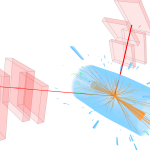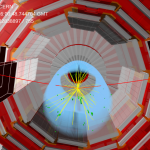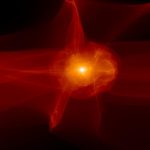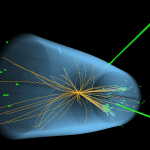Higgs boson
From Department of Energy, July 6, 2020: DOE announces $132 million in funding for 64 university research awards on a range of topics in high-energy physics to advance knowledge of how the universe works at its most fundamental level. Projects include experimental work on neutrinos at Fermilab, the search for dark matter, studies of the nature of dark energy and the expansion of the universe with the Dark Energy Spectroscopic Instrument and and investigation of the Higgs boson from data collected at the Large Hadron Collider at CERN in Switzerland.
From Physics World, April 3, 2020: A collaboration that includes Fermilab scientists is exploring how quantum computing could be used to analyze the vast amount of data produced by experiments on the Large Hadron Collider at CERN. The researchers have shown that a “quantum support vector machine” can help physicists make sense out of the huge amounts of information generated at CERN.
From CERN, Oct. 15, 2019: A new result by the CMS Collaboration narrows down the mass of the Higgs boson to a precision of 0.1%. After reporting the observation of the Higgs boson at the CERN LHC in 2012, scientists the ATLAS and CMS collaborations have been busy understanding exactly its place within the standard model of particle physics. Any straying from expectations could be an indication of new physics.
From CERN, May 24, 2019: The CMS collaboration used a large proton–proton collision dataset, collected during the Large Hadron Collider’s second run, to search for instances in which the Higgs boson might transform, or “decay”, into a photon and a massless dark photon.
From Science, Sept. 13, 2018: At a recent workshop at Fermilab, more than 100 physicists gathered to hone the conceptual tools needed for the long search for collisions that produce not just one Higgs boson, but two. Fermilab scientists Marcela Carena and Caterina Vernieri, as well as others on CMS and ATLAS, comment on the plan.
From Kane County Chronicle, Aug. 30, 2018: Fermilab scientists have played a role in the recent discovery of the Higgs boson transforming into bottom quarks as it decays. The breakthrough was described in a joint announcement from the Large Hadron Collider experiment collaborations ATLAS and CMS at CERN.




